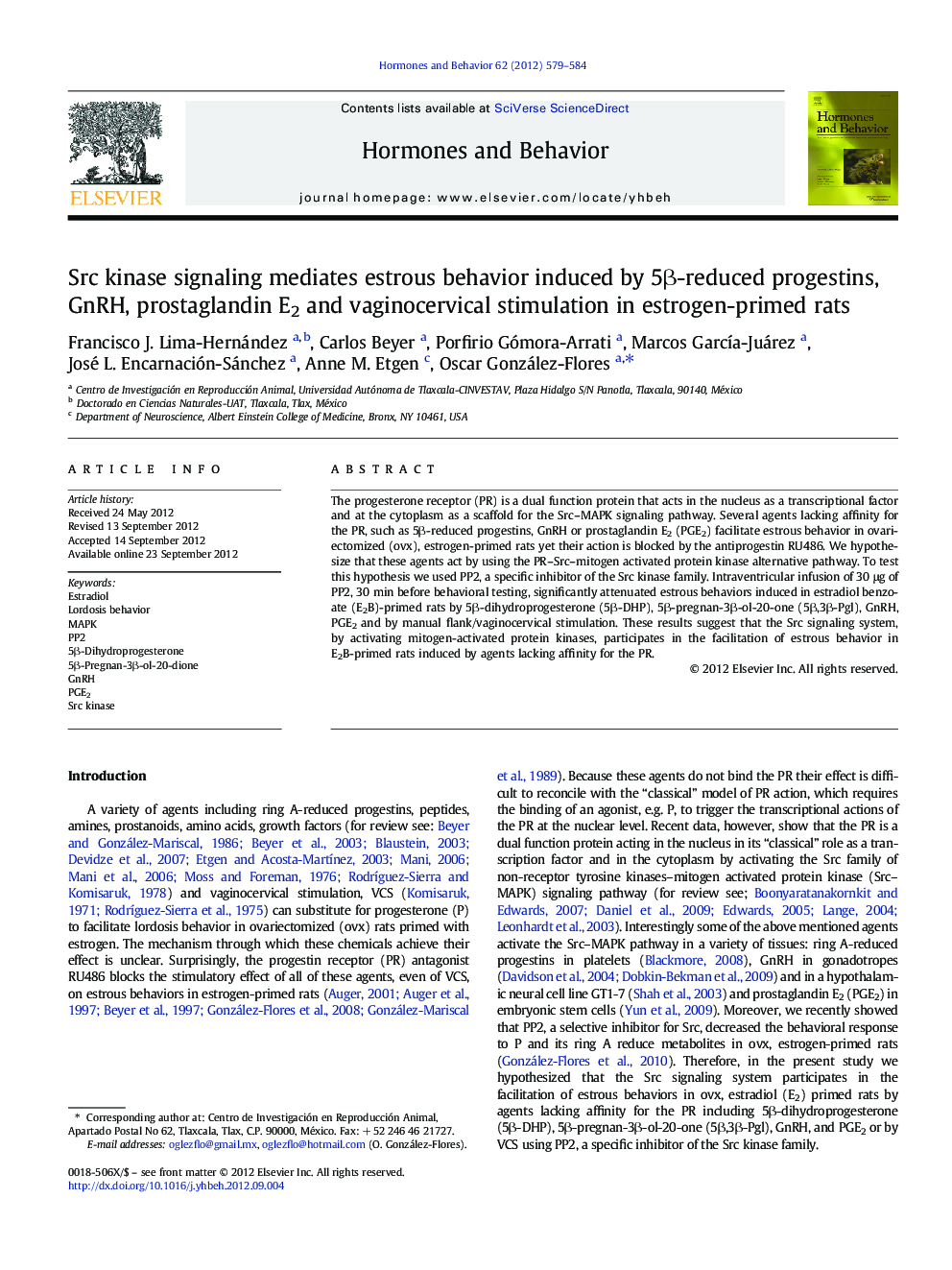| Article ID | Journal | Published Year | Pages | File Type |
|---|---|---|---|---|
| 324011 | Hormones and Behavior | 2012 | 6 Pages |
The progesterone receptor (PR) is a dual function protein that acts in the nucleus as a transcriptional factor and at the cytoplasm as a scaffold for the Src–MAPK signaling pathway. Several agents lacking affinity for the PR, such as 5β-reduced progestins, GnRH or prostaglandin E2 (PGE2) facilitate estrous behavior in ovariectomized (ovx), estrogen-primed rats yet their action is blocked by the antiprogestin RU486. We hypothesize that these agents act by using the PR–Src–mitogen activated protein kinase alternative pathway. To test this hypothesis we used PP2, a specific inhibitor of the Src kinase family. Intraventricular infusion of 30 μg of PP2, 30 min before behavioral testing, significantly attenuated estrous behaviors induced in estradiol benzoate (E2B)-primed rats by 5β-dihydroprogesterone (5β-DHP), 5β-pregnan-3β-ol-20-one (5β,3β-Pgl), GnRH, PGE2 and by manual flank/vaginocervical stimulation. These results suggest that the Src signaling system, by activating mitogen-activated protein kinases, participates in the facilitation of estrous behavior in E2B-primed rats induced by agents lacking affinity for the PR.
► We studied the Src signaling pathway in the facilitation of estrous behavior. ► Src signaling participates in the facilitation of estrous behavior in E2-primed rats. ► Src signaling acts by activating mitogen-activated protein kinases. ► Src plays an essential role in the facilitation of estrous behavior.
